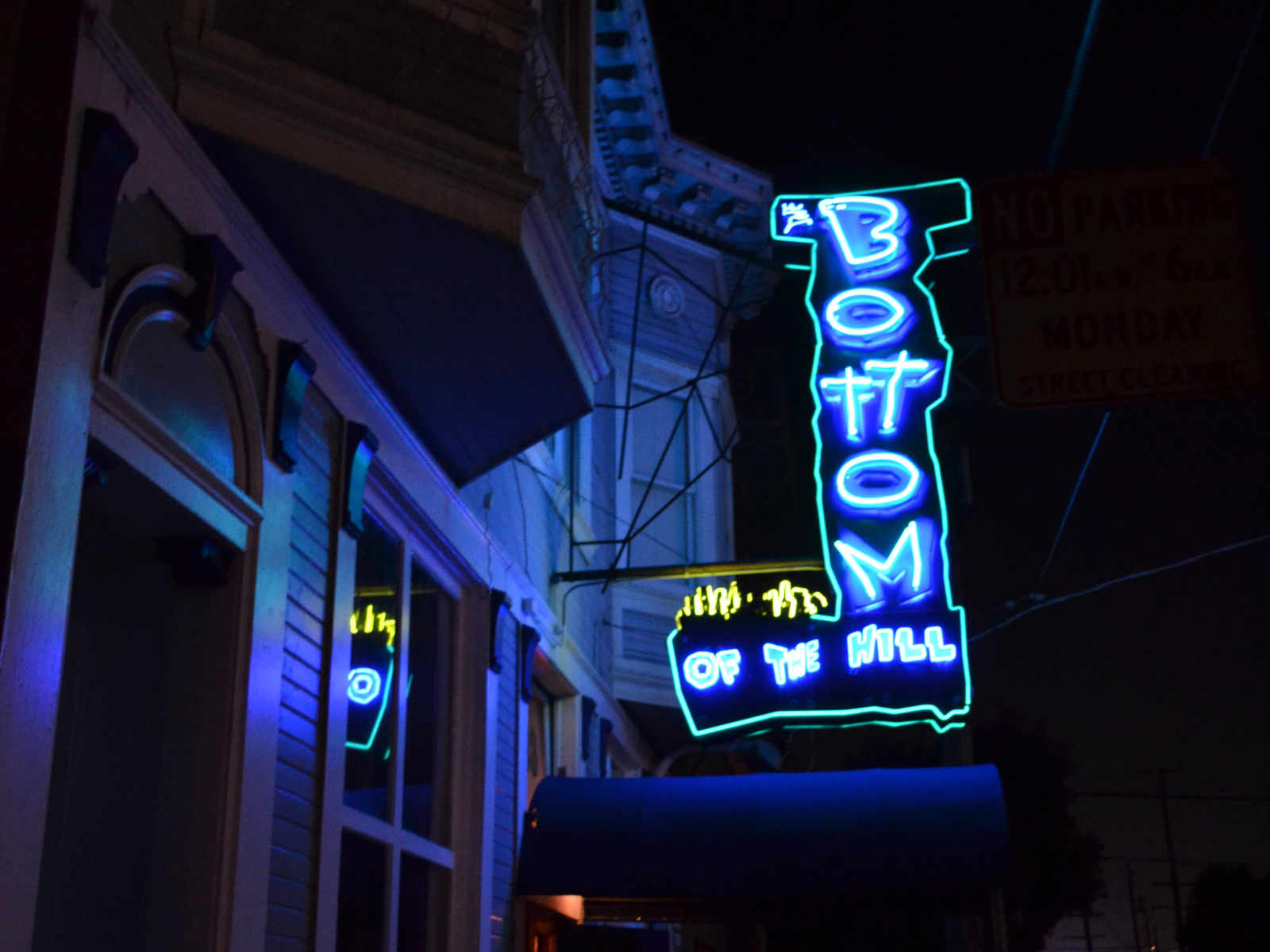Bottom Of The Hill Fights For Clubs, Community, and Culture
— By Kyle Kelly-Yahner (@kylekellyyahner) |

Let’s play a game of San Francisco music scene MadLibs based on articles you’ve probably read lately.
It looks like the beloved [music venue] in [desirable neighborhood] will be closing its doors to make room for [number] new luxury condos opening in [future date]. The owner of the [music venue] says that he would have to raise [woefully exorbitant amount of money] in order to keep [music venue] open. The condos will accommodate the [adjective] employees of [giant tech company] in search of housing in [desirable neighborhood].
Scanning the news, we picture an inverse relationship between fancy condos and musicians. The more condos spring up in San Francisco, the more musicians flee to the East Bay, LA and Portland in search of a more reasonable cost of living. It’s easy to be cynical about the whole thing, but cynicism alone doesn’t solve the problem. Amidst all the recent club closures, Google Bus protests, and other signs of the apocalypse, Bottom of the Hill has been fighting for their life, and yours. You just didn’t know it.
Neighbors, Noise Complaints, and Managing Expectations
One day in late 2010, a single person moved into a condo behind Slim’s. And within months, Slim’s was shelling out nearly $260,000 on soundproofing so those neighbors didn’t call the cops every night. The game has changed. San Francisco music venues now have to play a high stakes, Whac-A-Mole-style game of stomping out problems before they threaten their business.
Bottom of the Hill takes tales of woe like Slim’s seriously. “My heart breaks every time a nightclub closes because of neighbor complaints,” Bottom of the Hill co-owner Lynn Schwarz told Uptown Almanac. “The law doesn’t differentiate between real problem clubs, and clubs who are doing their best to keep noise levels down. One neighbor with a grudge and zero tolerance can single-handedly get a club shut down.”
The only way to stay alive and avoid a costly confrontation is to get ahead of it. Schwarz attends meetings about the three proposed developments—totaling in over 400 new units—in the club’s area of Potrero Hill, and sets expectations for developers as best she can.
“We let the developers and architects know that we require extra soundproofing and other structural considerations in order to support their projects. We also have banded together with our neighbors, both fellow merchants, through Potrero Dogpatch Merchant Association, and neighbors, through the Potrero Hill Boosters and a group that recently formed called Save the Hill.”
Looking To The Future, From The Bottom Up
Bottom of the Hill is currently in no danger of closing down. They’re confident that their 20+ years as a San Francisco music institution says something about their staying power. And the huge ace up their sleeve is the fact they own their building, making them immune to exponential rent increases that have put other clubs out of business.
But they’re not naive. They see the changing tides, and recognize that they might have a few fights in their future.
“I think the Bottom of the Hill nightclub will survive past whatever happens on our block in the next five years. That doesn’t mean I’m not scared of the annoying fights we could have ahead with neighbors who knowingly move in across the street from us,” said Schwarz. “The city has got to find a way to stop coddling neighbors whose level of tolerance to noise is best suited to the suburbs, and not a thriving city. This city will cease to be interesting when most of its nightclubs have been silenced.”
Lynn sees hope for the music scene in the possibility of extended BART hours, the strength of community organizers and fellow club owners. But the real fix is the simplest: “All it will take to help out is for you, as a music lover, to make it a point to support your local music venues and your local bands.”
I’ll leave you with one final Mad Lib for the future.
If [developers / employees of aforementioned giant tech company] are so eager to live in [desirable neighborhood] that in the process they close down the [cultural institution(s)] that made them want to live there, why even move at all?
[Photo: The Zender Agenda]